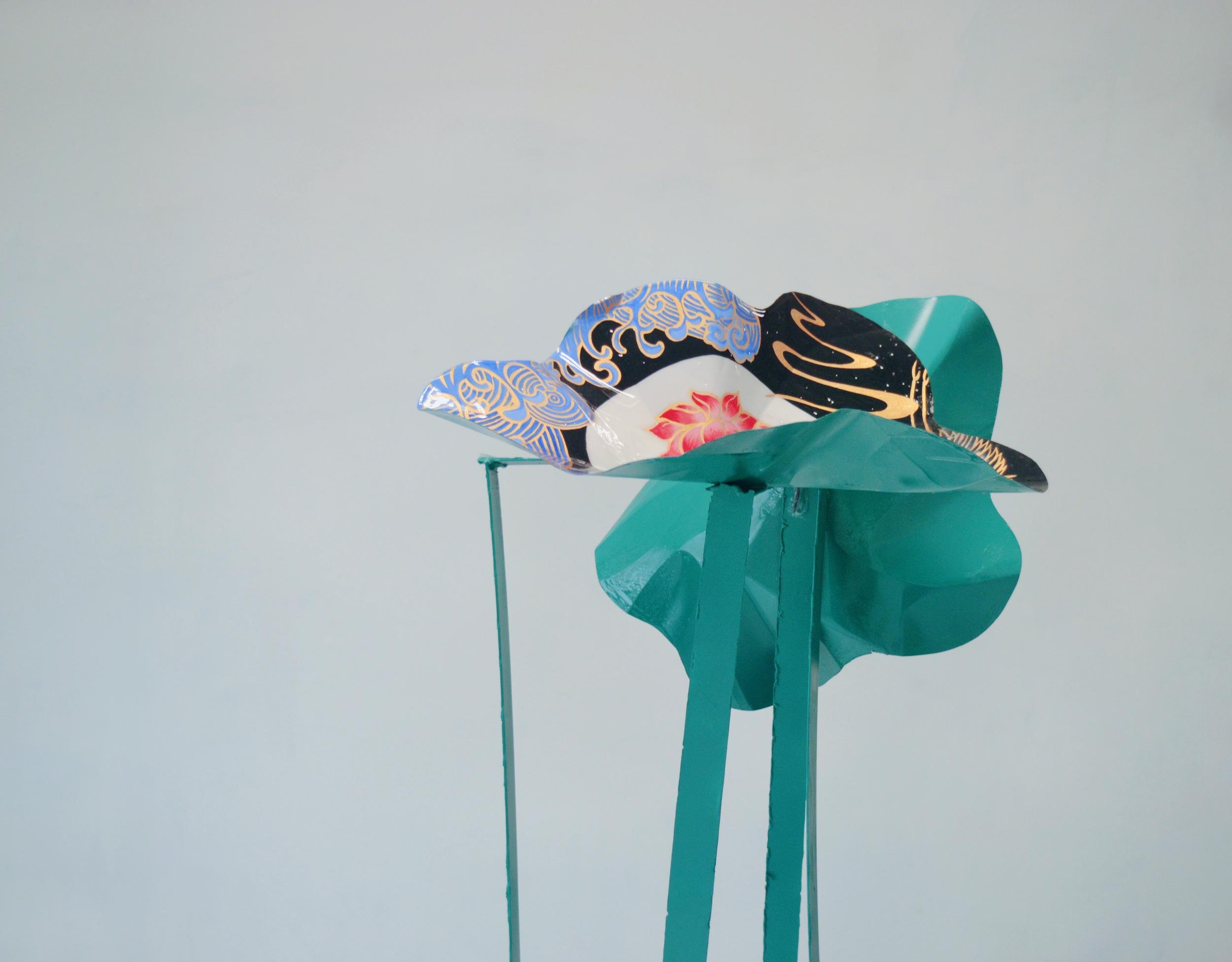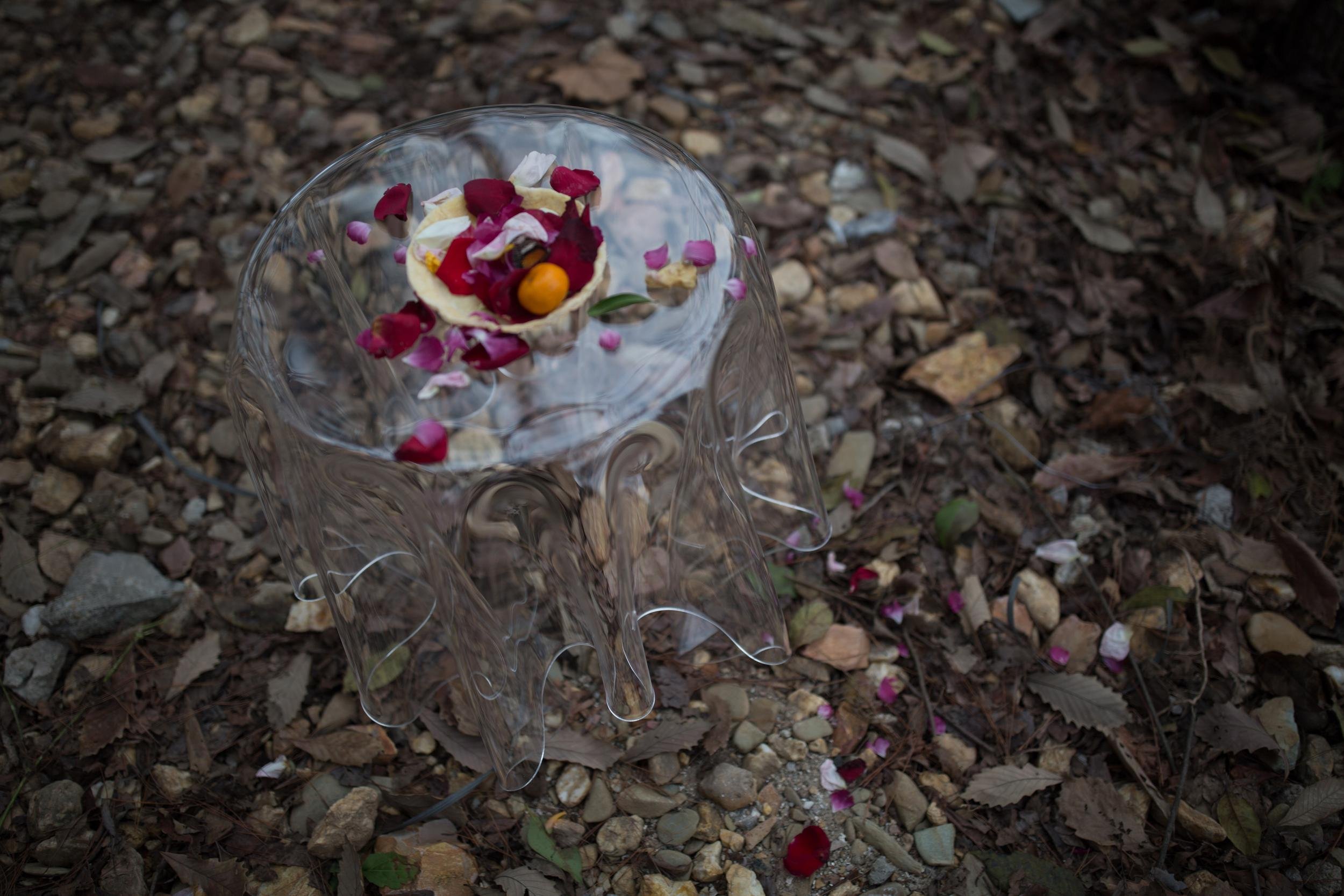The artist and their arts are one and the same, it is a reflection that can be so clear, or completely indecipherable, yet it is there waiting for us to find it. Yangyang Mao’s first name is in reference to an old Daoist Lao Zi saying. “The best kindness is like the nature of water.” His gesture was a way for my father to pass good wishes, expectations, and a message of finding one’s place, benefiting from everything around, and adapt to be the perfect place.
There are two important references in her process when making her work: Poplar Trees and Camels: The Poplar Tree has an amazing characteristic of surviving through some of the harshest weather and livable conditions. Considered the tree of God, the tree of life, the Poplar has an amazing ability to survive when faced with the harshest weather conditions. Camels have a similar persevering lifeforce: several weeks without water; travel up to 5,400 kilometers without food. Two specific characteristics of the camel are having firm faith and hope. These two concepts also happen to form the basis of Yangyang Mao’s value system.
In our partner exchange, Yangyang Mao mentioned some of the artists that inspire her to include Wu Guanzhong, David Hockney, Anish Kapoor, and James Turrell.
Yangyang Mao, work is rich with her family, community, and culture sensibilities from her home to the rest of the Xinjiang (pronounced- Shin-Jaang) Province. Throughout her practice, her work exploits these exotic facets of her world in a spectrum of ways.
As an American, I was very interested to delve deep into her world. During our conversation, she told me her father is an accomplished worldwide known artist, which begs the question of the possible pressures and guidance she may have experienced in her formative years. Yangyang Mao explained that her family’s influence in the arts is a resource, and it’s there for her to use but by no means to impose on her. She had to find her own way, and carve her own place in the art world, as she explained it to me.
Yangyang Mao is a classically trained and skilled artist, which she is not afraid to use if her work calls for it. Initially, her work embodies philosophical narratives, ideas, and theologies embedded in some way into each piece. Each of her pieces exudes richness of color combinations, attentive sensory details, and care in her work. She claims no particular medium nor follows any particular practice, all that matters are the work as she develops it, what it speaks about itself, and the viewer’s interpretations of it. While I was not attracted to her literary artistic rhetoric, I was captivated by what was there, the vast spectacle of her art she had created over the years, as well as the spectrum of disciplines she had acquired.
Her newer work, “Provider Plan” (* Please refer to below notes for more info) is a cluster of artifacts that she made primarily with pottery, resin, foam, and many more which is placed in an installation. In my understanding of one of the pieces, it was a blending of various cultures, heavy in various symbolism which was encased within the construction of various components, like the casted hands and arms. Each element is representative of her world. The massive number of details ranging from text tiles, color combinations, textures, and placement has a quality of being transportive into her culture but abstracted enough to work on what her work is trying to convey. This particular piece from Yangyang Mao, has similar awe I had the opportunity to see in person Judy Chicago’s “The Dinner Party” installation in a museum. Judy Chicago’s table had 999 notable women from history inscribed on the floor and 39 dinner settings of famous women on a triangular table which were all chronicled.
In certain respects, Yangyang Mao’s project also has very specified details, inscriptions, iconography, it was so much to digest! I believe both works are a visual feast to the eyes, and what we were left with is devouring its many subtle messages and anecdotes.
One of the handfuls of sculptures in “Bacon Factory,” a six-part installation: processing, facial recognition, stunning, butchering, packaging, and delivering are some of the topics she chose to exploit. was a movable mechanical hand, which looks like it can be programmed to do a task. Yangyang Mao explains that this piece represents the humanity taken out of the process of the slaughtering of the animal, a cold steel hand slicing, dividing, and packaging. This piece reminds me of Jean Tinguely. The Swiss artist initially began making his work with found objects, usually out of junk and scraps but soon became intrigued about mechanization, where he would incorporate motors and machinery that can be activated. With his keen eye for the latest and greatest of gadgets and gears, his interests were rooted in Dada, Constructivism, and Suprematism, when artists started to experiment with sculpture in motion.
Arguably, like Tinguely, Yangyang Mao wanted to bring to our attention of the removal of the human spirit or soul and witness the crude and heartless creations we made.
In conclusion, I find Yangyang Mao’s work an exploration of philosophical discord, highlighting her world and its practices, beliefs and perspectives which are completely foreign to me, yet a huge treat. In hindsight I believe Yangyang Mao’s work is very inspirational today yet, I know she has so much else to produce because her broad potential easily seen.





